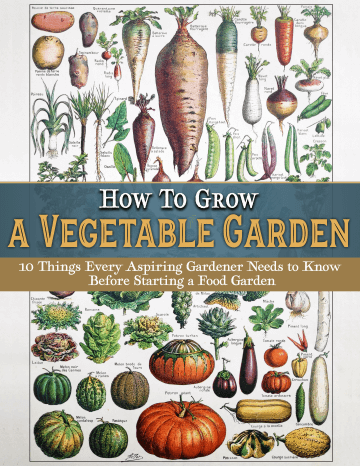
I admit it, I’m a scrapper. I love growing vegetables from scraps. It doesn’t always work, but when it does you get to give yourself a little pat on the back, and if you have kids, they’ll think you’re a super cool mad scientist.
No idea what I’m talking about? Growing vegetables from scraps actually means growing them from the parts you don’t use, like the ends of your lettuce or the celery bottoms. You’ve probably seen the YouTube videos and Facebook posts, but have you actually tried it? I can’t help but be fascinated by watching vegetables and herbs magically grow in my kitchen. Plus, who doesn’t love free vegetables, especially in the winter when the garden is asleep?
Discover 10 top tips for growing, harvesting, and enjoying fruits, vegetables, herbs and more from your home garden—when you access the FREEBIE How to Grow a Vegetable Garden, right now!
Your easy guide to growing vegetables from scraps
It’s cool. It’s free. It can be totally Insta-worthy. One more thing: Growing vegetables from scraps is actually super easy. And we aren’t talking about one or two vegetables here, either. You can grow scallions, garlic, potatoes, sweet potatoes, fennel, beets (for those tasty beet greens), and lots of herbs like basil and rosemary.
Of course, these all require slightly different approaches. Garlic for example is about as simple as can be (and maybe a bit boring compared to some of the others). In the fall, find those old cloves you have rolling around in your potato and garlic drawer (what, is that just me?) and pluck out the ones that have started to grow a little root. Plant the cloves in your garden (paper still on and root side down). By early to mid-summer, you’ll have fresh garlic. Avocados, on the other hand, will take years to grow from seeds.
Rather than getting into each and every vegetable, however, let’s look at a few different methods of growing vegetables from scraps.
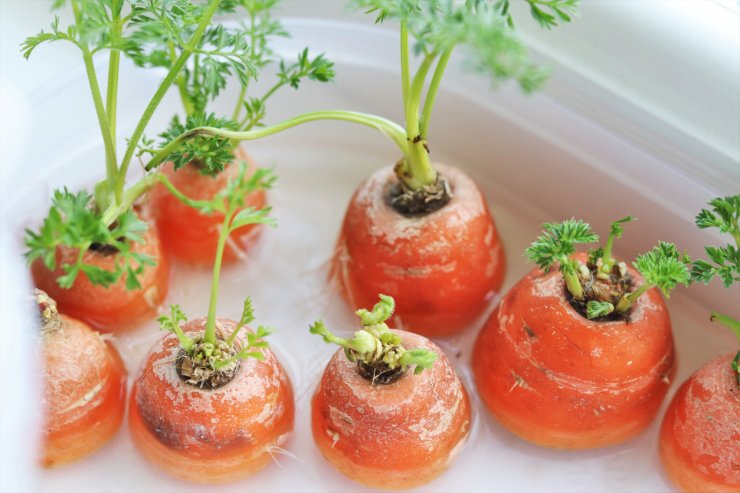
Vegetable tops
This category includes tasty vegetables like carrots and beets, and while you won’t get new carrots or beet roots, you will get the greens. Carrot greens make a great pesto and beet greens are delightful with just a little olive oil, salt and pepper. But I digress.
Just save the top inch or so from your root vegetables, and place them in a shallow tray of water. Once the roots begin to grow, you can plant them in soil and enjoy the greens whenever you want.
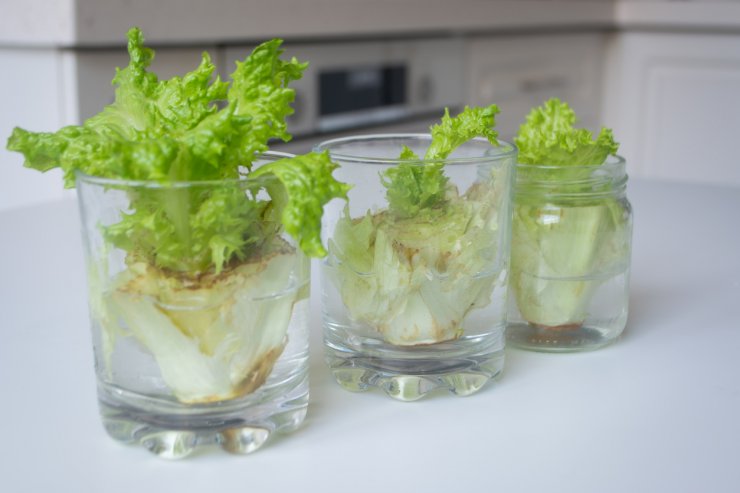
Vegetable bottoms
Here we’re looking at vegetables like celery, green onions, leeks, and lettuce.
With green onions, if the roots are still attached, you can plant it directly in a container of potting soil. For other vegetables, place the bottoms in a shallow bowl of water. Change the water each day until roots develop, then you can plant them.
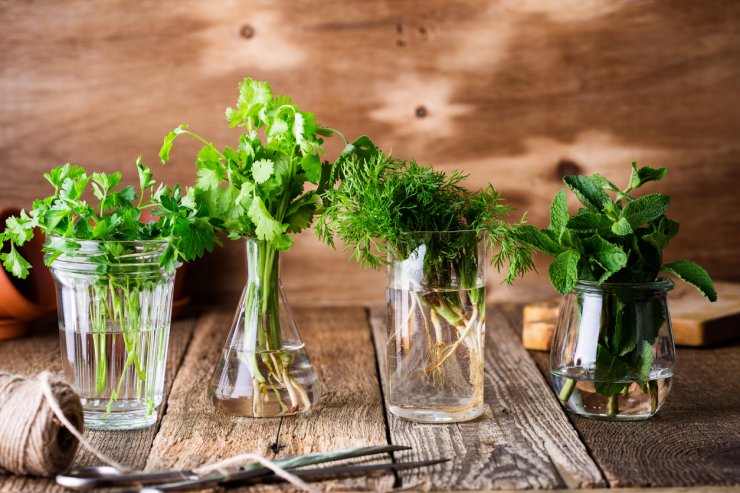
Perennial Herbs
This is the herb category, and it’s about as easy as possible, as long as you stick to perennial herbs like sage, thyme, and mint. Other herbs may root too, though not as easy.
Just place a stem in a glass of water, making sure all the leaves are above the water level. You’ll have roots within a few weeks. Once they’re an inch or so long, you can plant your herbs in a container of potting soil, or in your outdoor garden.
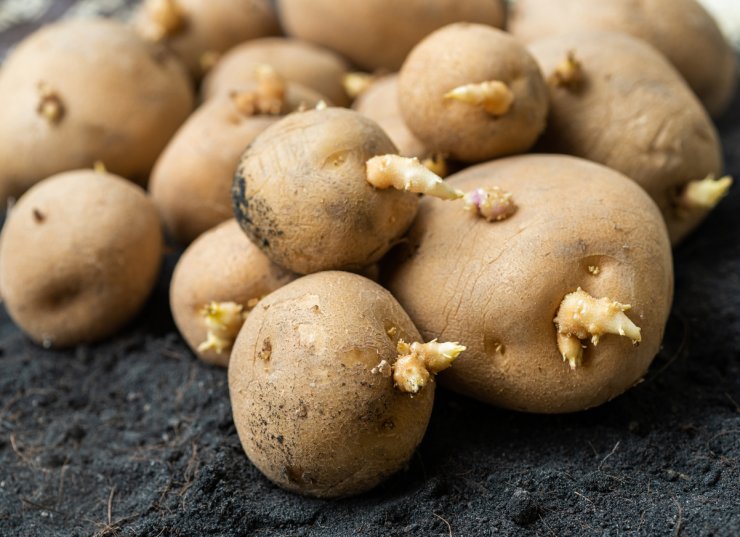
Potatoes
Before we talk about potatoes, there’s a caveat. They’re notorious for their susceptibility to bacteria and disease, not to mention blight. That said, they can be easy to grow. All you need is one potato to get started.
Most gardeners will plant a section of potato with the eyes facing up. Once the plant starts to grow, be sure to occasionally add a few inches of soil around the base of the stem. This is called “hilling,” and is important to keep young tubers from being exposed to sunlight.
Me, I have a drawer in the kitchen where I keep my light and moisture sensitive veggies, like potato, garlic, and onion. Usually a lone potato will end up in the back and start rooting out, growing arms, asking someone to save it. If you have one of those, you can pop it in the ground too as a head start—it’ll probably thank you.
The nice thing about growing vegetables from scraps is that, in most cases, you can watch the roots develop and grow. It’s a fascinating way to enjoy watching nature do its thing.
What vegetables have you grown from scraps? Do you have any recommendations for what to grow? Let’s chat in the comments below.
Discover 10 top tips for growing, harvesting, and enjoying fruits, vegetables, herbs and more from your home garden—when you access the FREEBIE How to Grow a Vegetable Garden, right now!


